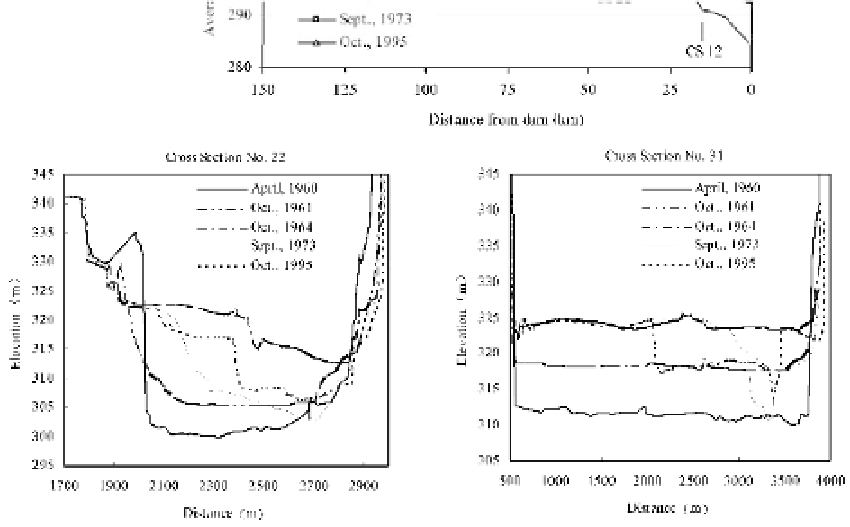Environmental Engineering Reference
In-Depth Information
Fig. 6.44
Longitudinal (upper) and transverse (lower) profiles in the reservoir varying with the changes of operational
conditions for the Sanmenxia Reservoir
6.5.3 Sedimentation of the Weihe River Induced by Sanmenxia Reservoir
The Weihe River is 818 km long and has a drainage area of 134,800 km
2
with more than 23 million
people dwelling in the river basin. The river basin was known as the “800 li (1 li 0.5 km) fertile Qin
Valley”. The most serious adverse effect of Sanmenxia Dam is the unanticipated sedimentation in the
lower Weihe River and consequently the high flooding risk to the lower Weihe Basin and Xi'an, an ancient
capital of China. Sedimentation in the Weihe River has changed the valley into a swamp with a high
ground water table. Local people complained and some officials and scientists suggest decommissioning
the dam. The Weihe River has been experiencing a striking change in fluvial processes since the impoundment
of Sanmenxia Reservoir. The river channel has been changing from meandering with a sinuosity of 1.65
to straight with a sinuosity of only 1.06 and slightly meandering with a sinuosity about 1.3.
The long-term average annual runoff of the Weihe River is 8.06 billion m
3
and annual sediment load is
386.6 million tons, which compose about 1/5 of the annual runoff and 1/3 of the annual sediment load of
the Yellow River at Sanmenxia. In the past decades the water and sediment load in the Weihe River and
the Yellow River have been reducing due mainly to human activities. Table 6.9 lists water and sediment
load in the rivers in the periods 1960-2001 and 1986-2001. Water and sediment load in the two periods
are less than the average values before 1980, but the ratios of water and sediment load from the Weihe





Search WWH ::

Custom Search